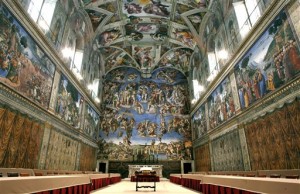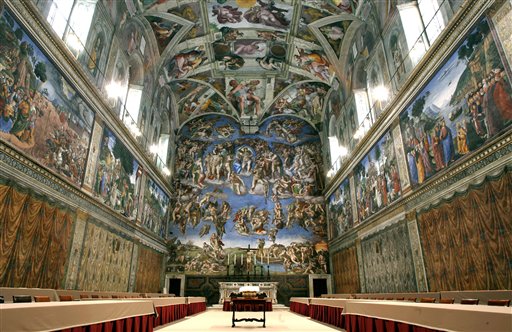
Associated Press
By Nicole Winfield
Associated Press
VATICAN CITY — The Vatican revealed a closely kept secret Thursday: The Sistine Chapel’s precious frescoes were starting to turn white from the air pollution caused by so many visitors passing through each day to marvel at Michelangelo’s masterpiece.
Officials first noticed the whitening patina in 2010 and immediately launched an investigation. The damage wasn’t visible from the ground, but close inspection showed pockets of frescoes covered with a powdery patina.
“The concern was not just aesthetic but also the danger for the integrity of the paintings,” Vittoria Ciminio, head of the Vatican Museums’ conservation department, told a conference Thursday.
While the exact origin is still unknown, officials said the powder consisted of calcium carbonate and calcium bicarbonate deposits, believed to have formed from the increasing levels of carbon dioxide and humidity passing through the chapel’s porous plaster walls.
The patina was easily removed and no permanent damage occurred, said Ulderico Santamaria, who heads the museums’ restoration laboratory. But officials warned that such calcium buildup can do lasting damage if left untreated.
Vatican officials have said the Sistine Chapel’s new air conditioning and air filtration system, inaugurated this week, would prevent potential damage from the air pollution brought in by crowds nearing 6 million this year. But they never revealed that damage was already underway and that the new system was aimed at preventing further problems.
Santamaria said studies showed that the patina was superficial, and hadn’t bleached or mixed in with the actual colors, meaning the frescos themselves weren’t harmed. He said the patina wasn’t found on all frescoes, but was concentrated in some areas of the chapel, presumably where there was greater absorption of water from the humid air or condensation inside the walls.
“The state of the frescoes is good, and this whitening was reversible,” he said.



